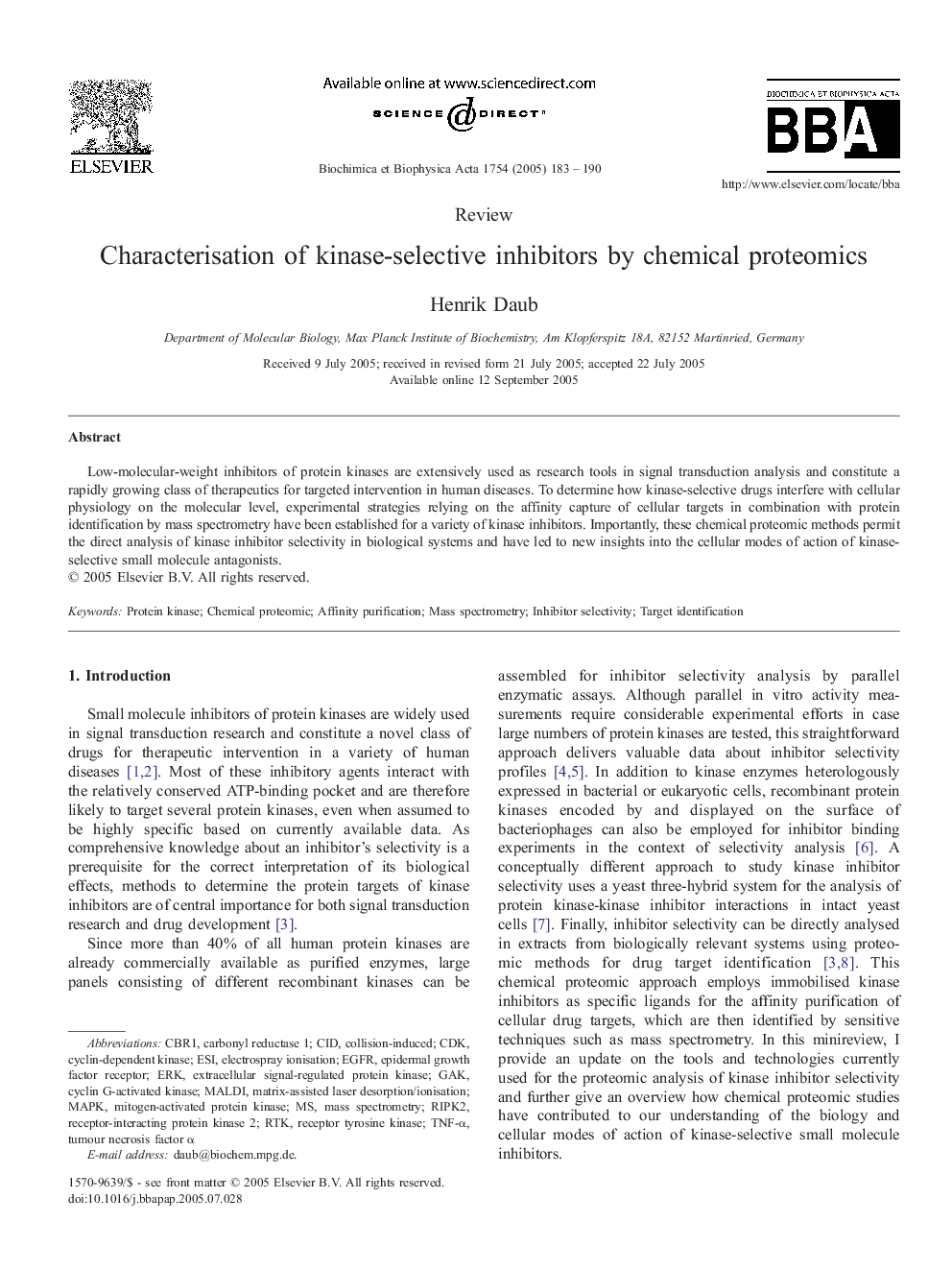| Article ID | Journal | Published Year | Pages | File Type |
|---|---|---|---|---|
| 9745084 | Biochimica et Biophysica Acta (BBA) - Proteins and Proteomics | 2005 | 8 Pages |
Abstract
Low-molecular-weight inhibitors of protein kinases are extensively used as research tools in signal transduction analysis and constitute a rapidly growing class of therapeutics for targeted intervention in human diseases. To determine how kinase-selective drugs interfere with cellular physiology on the molecular level, experimental strategies relying on the affinity capture of cellular targets in combination with protein identification by mass spectrometry have been established for a variety of kinase inhibitors. Importantly, these chemical proteomic methods permit the direct analysis of kinase inhibitor selectivity in biological systems and have led to new insights into the cellular modes of action of kinase-selective small molecule antagonists.
Keywords
RIPK2Receptor-interacting protein kinase 2RTKCBR1EGFRERKCIDCDKESIMAPKInhibitor selectivityAffinity purificationtumour necrosis factor αTarget identificationMass spectrometryTNF-αMatrix-assisted laser desorption/ionisationMALDIGAKProtein kinasemitogen-activated protein kinaseExtracellular signal-regulated protein kinasecarbonyl reductase 1cyclin-dependent kinaseReceptor Tyrosine KinaseEpidermal growth factor receptorelectrospray ionisation
Related Topics
Physical Sciences and Engineering
Chemistry
Analytical Chemistry
Authors
Henrik Daub,
